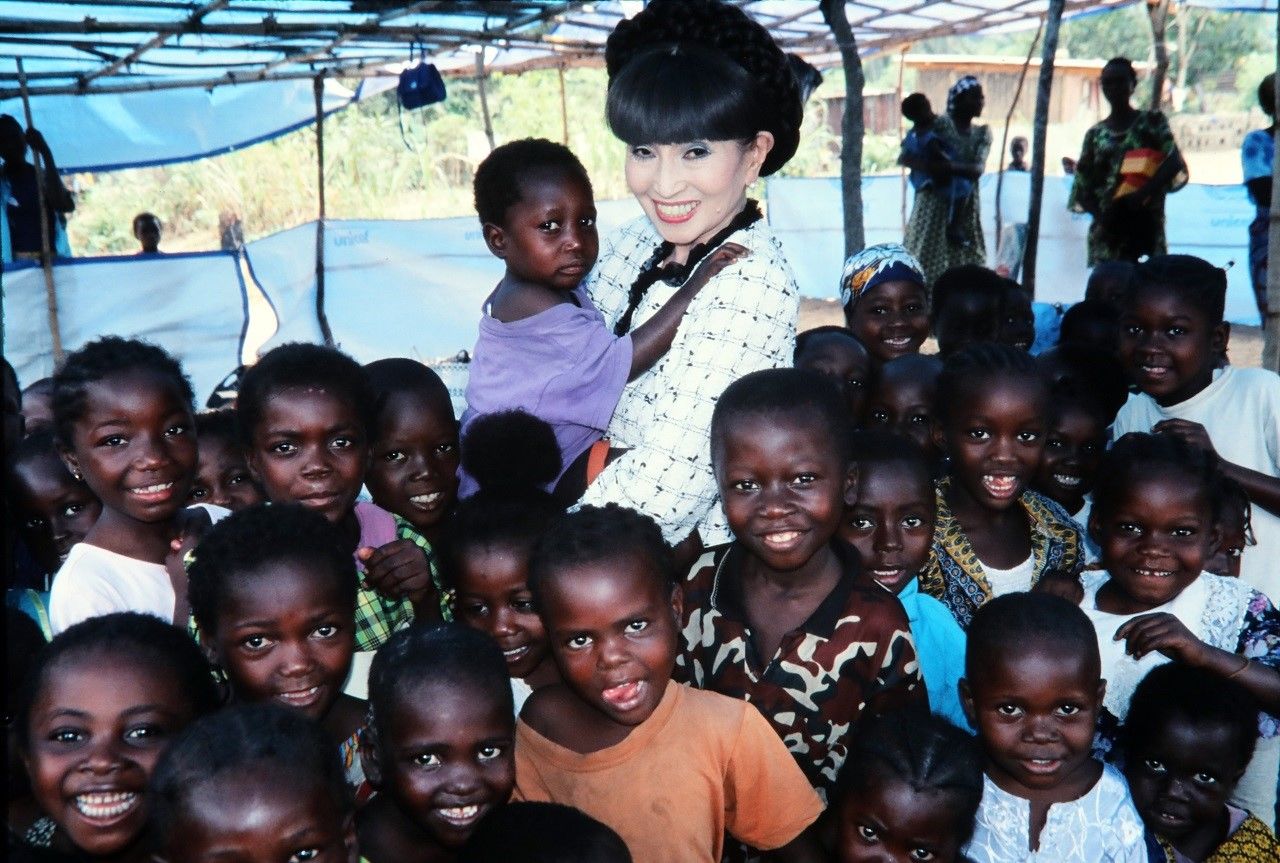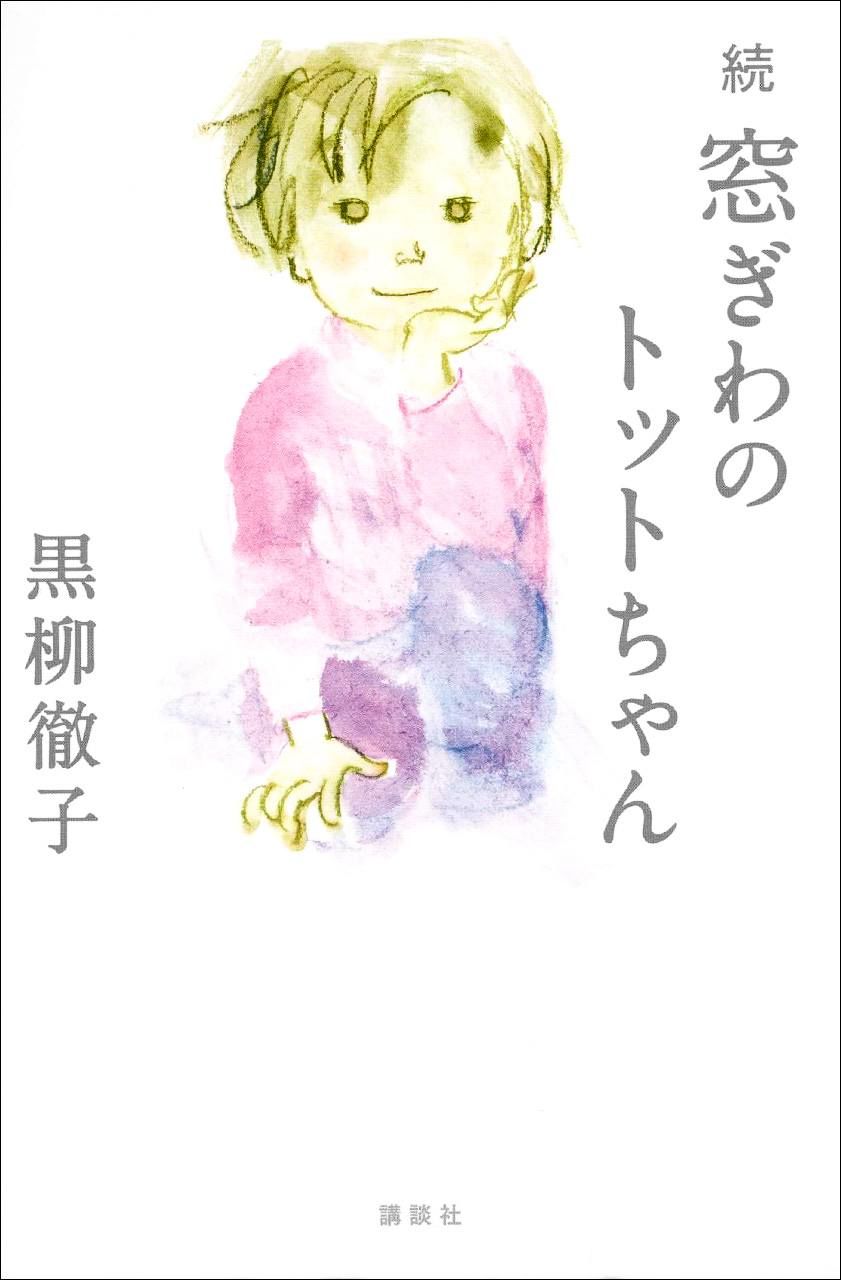
Kuroyanagi Tetsuko Pens Sequel to World Record “Totto-chan” Memoir
Books Culture- English
- 日本語
- 简体字
- 繁體字
- Français
- Español
- العربية
- Русский
When asked why she had written a sequel to Totto-Chan: The Little Girl at the Window in a recent television interview, Kuroyanagi Tetsuko replied: “I wanted to write about the war while I still remember it.”
Now aged 90, she was 12 years old when World War II ended.
42 Years Since the Original
Kuroyanagi’s novel Madogiwa no Totto-chan (translated into English by Dorothy Britton as Totto-Chan: The Little Girl at the Window) was originally published in 1981. A memoir of Kuroyanagi’s childhood, it was described as “the first best-seller by a female author” (a label that today sounds absurdly dated). The book was soon translated into other languages, and to date it has sold over 25 million copies around the world, earning it a Guiness World Record title for an autobiographical memoir by a single author.
I received a copy from my father in elementary school and was captivated by the tale of Totto’s expulsion from school when in the first grade, and her days at her new school, Tomoe Gakuen.
I loved the stories of how she tore her clothing to pieces climbing under barbed wire every day, of cooking rice in an outdoor hangō cooker while on her school excursion, of falling into a pit toilet, and of tree-climbing. The main character Totto-chan sparked my imagination—I adored her—she was not timid, but was unaffected and brimming with curiosity. I imagined myself as Totto-chan and wondered if similar incidents might be awaiting me.
Near the end of the book, the signs of war become clearer: Totto-chan’s beloved janitor is conscripted to the military, the children have a tea party where the only snack at-hand is dried squid, and her lunchbox becomes more austere.
In the sequel to her best-seller, Kuroyanagi answers the question of what happened to Totto-chan in the subsequent years. It describes Tokyo in wartime, Totto-chan’s time as an evacuee in Aomori Prefecture, and her life up until she begins work at national broadcaster NHK after the war, with the author’s typically lively, humorous style.
As food supplies tightened, she tells how her school lunchbox shrank to just 15 soybeans, which she still gobbles down with characteristic lack of self-restraint. It also describes the reddened sky during the air raids.
She recalls how evacuating to Aomori, she initially found the local dialect inpenitrable, but learned to speak it in no time. Her mother makes rice balls for returned soldiers and it soon turns into a roaring trade.
During her time as a research student at NHK, Kuroyanagi was sometime kept from participating in radio recordings due to her habit of not following instructions. However, her voice earned her a role ahead of her rivals in the radio drama Yanbō, Ninbō and Tonbō. Before long, she was the talk of the town.
Reading the new book, the image of Totto-chan was still fresh in my mind—it was hard to believe that more than 40 years have passed since the original came out. I felt myself growing up along with Kuroyanagi, who I now know well, with her determination, tom-boyishness, strong moral sense, and unaffected manner. She is kind and considerate of her friends, but can also seem at times scatterbrained and chatty.
Her television talk-show, Tetsuko no heya (Tetsuko’s Room), won a Guinness World Record as the longest-running talk show with the same host. On television, she seems exactly like the Totto-chan depicted in the novel.
A Duty to Share the Suffering of Children
The desire to record what happened during the war is deeply related to Totto’s life.
In the prologue, Kuroyanagi explains: “OnTetsuko’s Room, I sat listening to celebrities describe their time during the war. If they don’t tell their stories now, they’ll be forgotten.”
The wartime reminiscences of the likes of actor Ikebe Ryō (1918–2010) and singers Minami Haruo (1923–2001) and Awaya Noriko (1907–99) are full of melancholy.
Since 1984, Kuroyanagi has visited war-torn Somalia, Mozambique, and the Balkan states in her role as a UNICEF Goodwill Ambassador. Consequently, she is deeply conscious of the effects of wars.

Totto-chan surrounded by children in the Republic of Congo in 2004. (Photo courtesy of Tanuma Takeyoshi)
Since my appointment as a UNICEF Goodwill Ambassador, I have endeavored to let people around the world know about the suffering of children in many countries. When I held a dying, orphaned child in Africa, I felt that they would be better off even in my arms than dying alone.
The war between Ukraine and Russia shows no sign of ending, and many lives are being lost daily in Gaza and Israel. Even if Japan is not itself involved, there is always conflict somewhere in the world, always people suffering.
In the novel, Totto-chan always seems happy. Likewise, Kuroyanagi’s smile also makes a strong impression. Even as Totto-chan grew into Kuroyanagi Tetsuko, she has always been able to bring a smile to faces. Totto-chan hoped, perhaps more than anyone, that others could be happy and hated, perhaps more than anyone, to see someone sad.
I hope the message in Totto-chan’s new book can again speak to people around the world.
